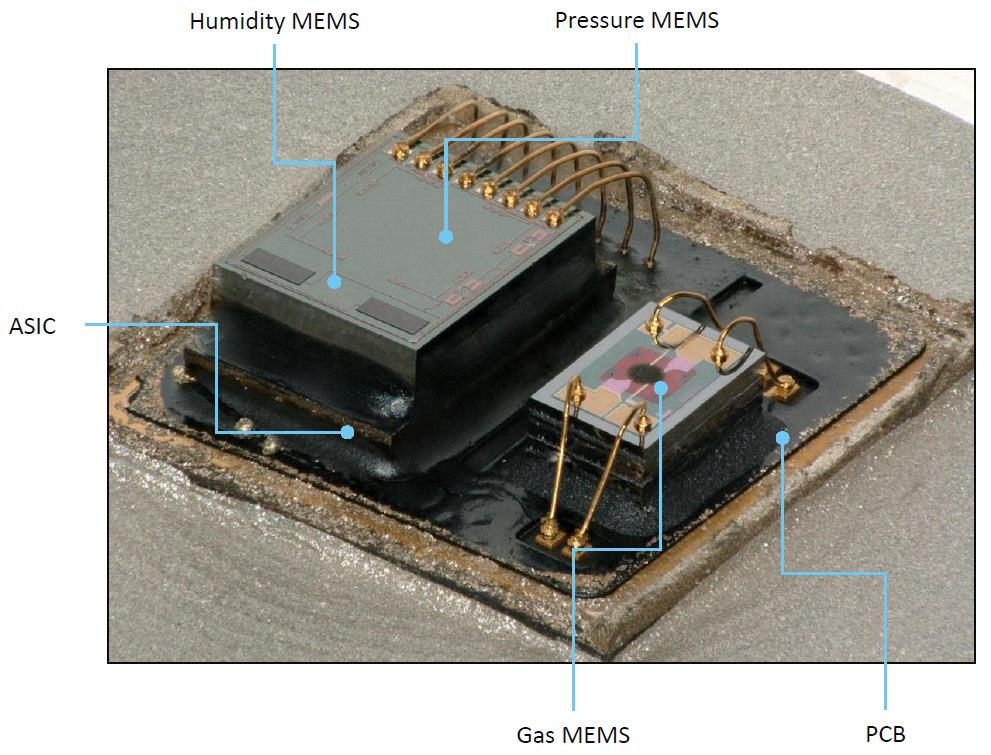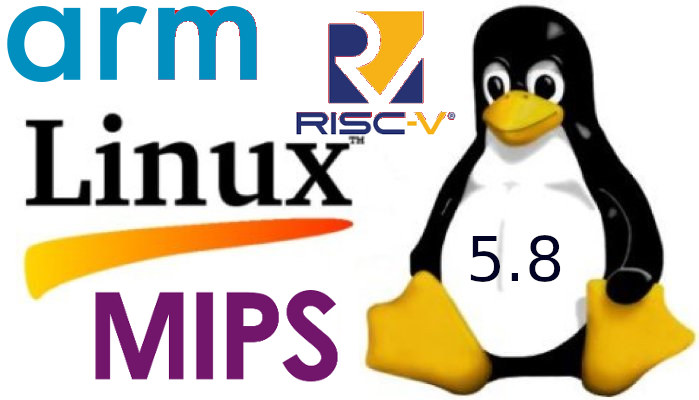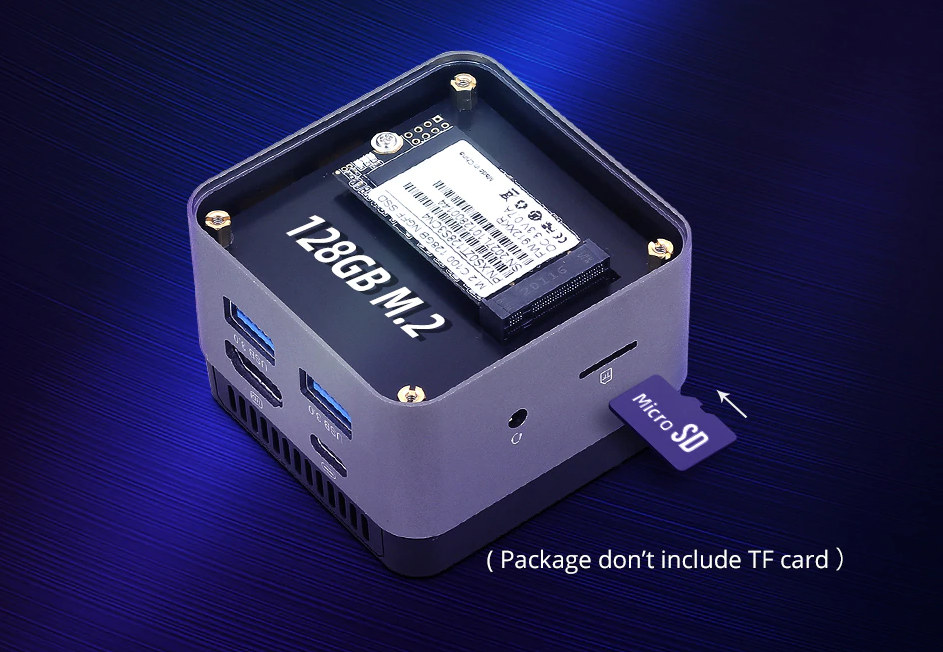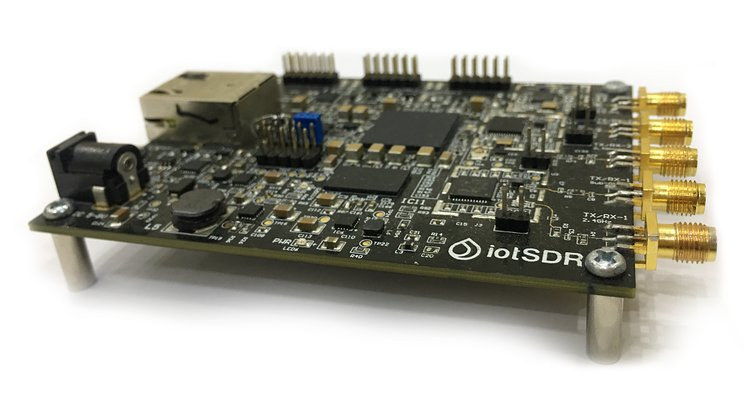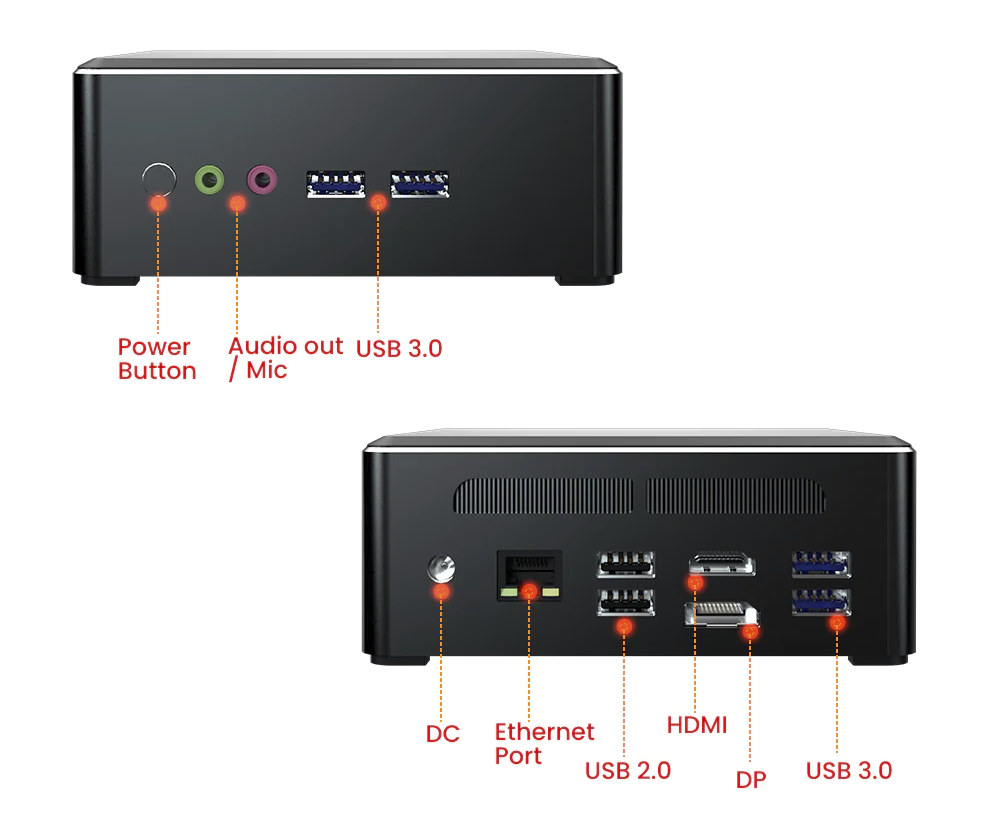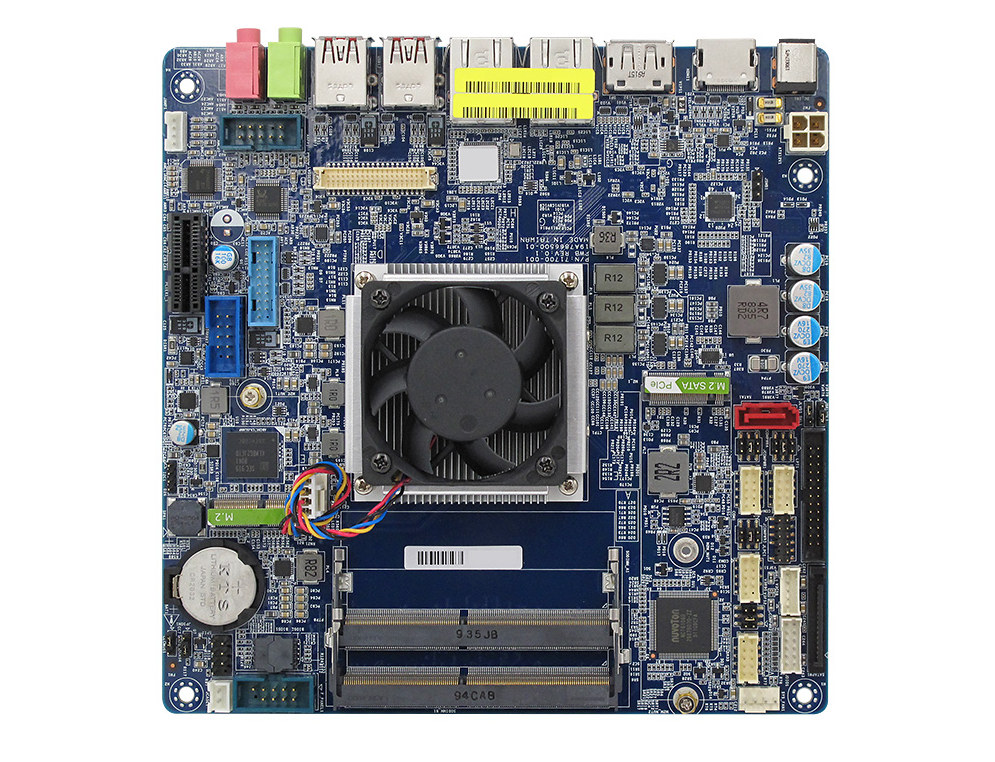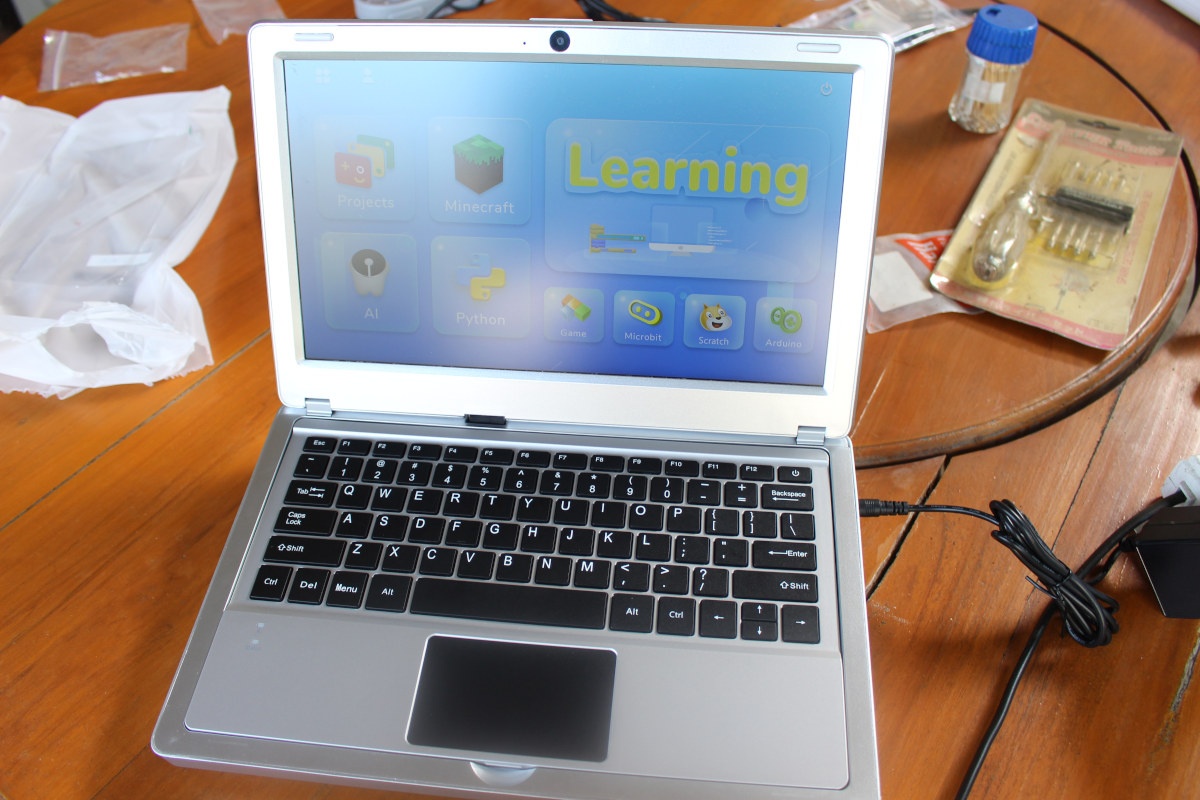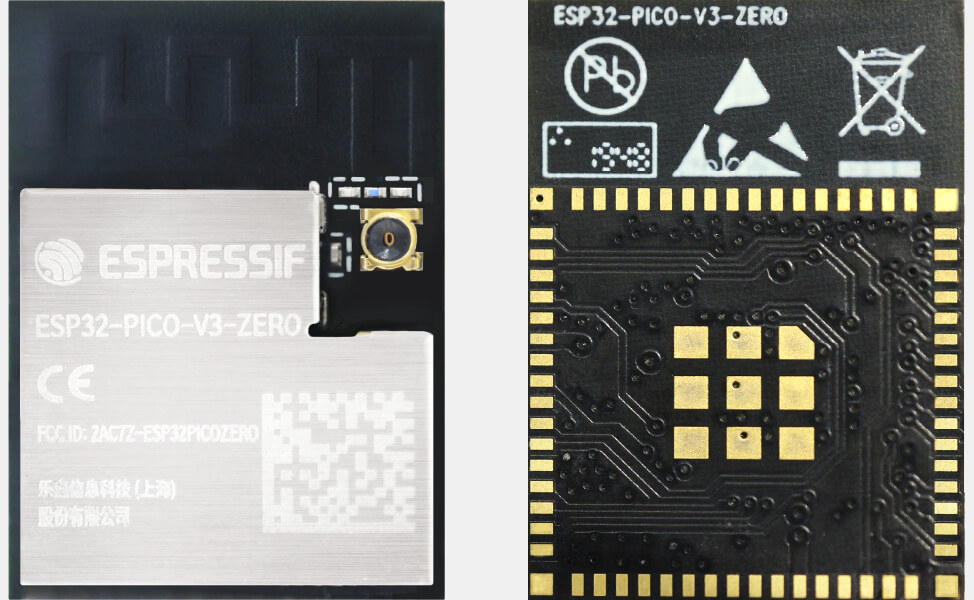Bosch BME680 is a 4-in-1 air quality sensor measuring relative humidity, barometric pressure, ambient temperature, and gas (VOC) levels. It’s found in boards such as STM32 based Metriful Sense or Nordic Thingy:91, and Bosch Sensortec published an Arduino library based on “Bosch Sensortec Environmental Cluster (BSEC) Software” to provide precise calculations temperature, humidity, pressure, and indoor air quality (IAQ). BSEC proprietary algorithms can provide indoor air quality data as good as more expensive CO2 sensors according to a recent presentation by the company. Max Prokhorov, lead ESPurna maintainer, and Rui Marinho noticed none of the popular open-source ESP8266 automation firmware including ESPurna, Tasmota, and Esphome supported BME680 sensor just yet. So they decided to work together to add BME680 sensor support via BSEC library to ESPurna firmware, and now it’s very easy to use as you just need to define BME680_SUPPORT=1 before compiling the firmware. You’ll find the now-merged pull […]
Linux 5.8 Release – Main Changes, Arm, MIPS, and RISC-V Architectures
Linus Torvalds has just released Linux 5.8: So I considered making an rc8 all the way to the last minute, but decided it’s not just worth waiting another week when there aren’t any big looming worries around. Because despite the merge window having been very large, there really hasn’t been anything scary going on in the release candidates. Yeah, we had some annoying noise with header file dependencies this week, but that’s not a new annoyance, and it’s also not the kind of subtle bug that keeps me up at night worrying about it. It did reinforce how nice it would be if we had some kind of tooling support to break nasty header file dependencies automatically, but if wishes were horses.. Maybe some day we’ll have some kind of SAT-solver for symbol dependencies that can handle all our different architectures and configurations, but right now it’s just a manual […]
Intel powered 2.4-inch Mini PC’s Show up as Alternatives to CHUWI LarkBox
Leaving HDMI PC sticks aside, we started to see really small, pocket-sized Intel mini-PCs last year with ECS LIVA Q2 micro PC with a dual-core N4100 Gemini Lake processor and measuring 70x70x33.4 mm. CHUWI managed to design an even smaller Gemini Lake Mini PC with Larkbox mini PC powered by a Celeron J4115 quad-core processor and measuring 61x61x43mm (2.4″ x 2.4″ x 1.7″). It looks like they may have launched a new 2.4-inch Mini PC form factor, as at least two other models with pretty much the same dimensions, but different specifications, have come to our attention. XCY X51 2.4-inch Mini PC Specifications: SoC – Intel Celeron N4100 quad-core Gemini Lake processor @ 1.1 / 2.4 GHz with Intel UHD Graphics 600; 6W TDP System Memory – 8GB LPDDR4 Storage – 128GB M.2 2242 SSD, MicroSD card slot Video Output – HDMI 2.0 up to 4K @ 60 Hz Audio […]
IoTSDR Linux Board Targets the Development of IoT Gateways with Standard or Custom IoT Protocols (Crowdfunding)
Xilinx Zynq-7010/-7020 powered iotSDR board by EmbedINN enables the development of IoT gateways with support for LoRa, SigFox, WeightLess, Bluetooth, BLE, 802.15.4, ZigBee, as well as custom IoT protocols. The board also supports GPS, Galileo, Beidou, and GLONASS navigation systems thanks to a Maxim Integrated MAX2769 GNSS chip. iotSDR key hardware features and specifications: SoC (one or the other) Xilinx Zynq-Z7010 (XC7Z010-1CLG400C) dual-core Arm Cortex-A9 processor with 256 kb on-chip memory, FPGA fabric with 28,000 logic cells, 17,600 LUTs, 2.1 Mb block RAM, 80 DSP slices Xilinx Zynq-Z7020 (XC7Z020-1CLG400C) dual-core ARM Cortex-A9 processor with 256 kb on-chip memory, FPGA fabric with 85,000 logic cells, 53,200 LUTs, 4.9 Mb block RAM, 220 DSP slices System Memory – 512 MB DDR3 Storage 128 Mbit QSPI flash memory for firmware Microchip AT24MAC602 SPI EEPROM for RF transceiver MCU firmware and data Radios “IoT” Radios RF Transceivers – 2x Microchip/Atmel AT86RF215 European band – […]
T-bao MN22 Mini PC Features AMD Ryzen 3 2200U Mobile Processor
T-bao MN22 is an NUC-like mini PC powered by an AMD Ryzen 3 2200U mobile processor with a 12 to 25W TDP, coupled with up to 16GB RAM and 512GB NVMe SSD storage, as well as dual 4K video output thanks to HDMI 2.0 and DisplayPort video outputs. T-bao MN22 specifications: SoC – AMD Ryzen 3 2200U dual-core/quad-thread mobile processor @ 2.5GHx / 3.4 Ghz (Turbo Bosst) with Vega 3 Graphic; TDP: 12 to 25 Watts (Default: 15W) System Memory – 2x SO-DIMM DDR4 slots fitted with 8GB or 16GB RAM by default Storage – M.2 NVMe/SATA SSD socket with 128GB or 512GB NVMe SSD by default, SATA port for 2.5″ drive up to 7mm thick Video Output – DisplayPort, HDMI 2.0 Audio – 3.5mm audio output jack, 3.5mm mic-in jack Networking – Gigabit Ethernet, dual-band 802.11b/g/n/ac WiFi 5 and Bluetooth USB – 4x USB 3.0, 2x USB 2.0 Misc […]
BCM MX4305UE Industrial Mini-ITX Motherboard Features Intel Celeron 4305UE Processor
Yesterday, as I wrote about AAEON UP Xtreme SBC, I realized that while I had seen some other Intel Celeron 4305UE Whiskey Lake boards with 3.5-inch and Pico-ITX form factors, I’ve just found out an industrial mini-ITX motherboard from BCM Advanced Research equipped with the processor. Just like other similar industrial Whiskey Lake SBC’s, Intel Core i3/i5/i7 Whiskey Lake-U Embedded processors are offered as options/upgrades for BCM MX4305UE motherboard, and the company says the board is designed for power-sensitive IoT devices and embedded applications such as video wall control management system, point-of-sales systems (POS), kiosks, automated vending machines, panel PCs, digital signage, medical and gaming devices. BCM MX4305UE mini-ITX board specifications: SoC Default – Intel Celeron 4305UE dual-core Whiskey Lake processor @ 2.0 GHz (base, no turbo frequency) with Intel UHD Graphics 610; 15W TDP Options Intel Core i7-8665UE quad-core processor up to 4.40 GHz max – TDP: 15W Intel […]
CrowPi2 Raspberry Pi 4 Learning Kit Review – Part 1 – Unboxing and First Boot
Last month, we wrote about Elecrow introducing CrowPi2 Raspberry Pi 4 laptop and electronics learning kit for its launch on Kickstarter crowdfunding website. The company has now sent one of its kits to CNX Software for evaluation and review. I’ll start by checking out the content of the package, and boot it up, before publishing a more detailed review in a few weeks. The package is fairly big and highlights it’s made for kids over 8 years old with close to 100 course resources and over 20 electronics modules. The back of the package list the main features and package contents with for example a 11.6″ Full HD display, Raspberry Pi 4 4GB board running a customized (Linux) system or Retropie for game emulation, electronics components and modules like servos and motors, as well as some resources for gaming including two USB gamepads. The first things we get when opening […]
Espressif and Amazon Introduce ESP32-PICO-V3-ZERO Alexa Connect Kit Module
Espressif Systems & Amazon have recently announced ESP32-PICO-V3-ZERO Alexa Connect Kit (ACK) module providing out-of-box connectivity to ACK cloud services, support for features such as Alexa control, “Frustration-Free Setup” and Amazon Dash replenishment for connected devices. The tiny (23 x 16 x 2.3mm) module is based on the company’s ESP32-PICO-V3 System-in-Package (SiP) based on ESP32-V3 dual-core Xtensa LX6 WiFI and Bluetooth SoC, a 4 MB SPI flash, a crystal oscillator, filter capacitors, and an RF matching network. The module supports 2.4 GHz 802.11 b/g/n WiFi, Bluetooth, and Bluetooth Low Energy connectivity and comes with a PCB antenna and a u.FL connector to plug in an external antenna [Update: That should be an RF test connector instead, see comments]. ESP32-PICO-V3-ZERO module interfaces to a host MCU through a UART interface, and to speed-up time-to-market the module comes pre-certified for regulatory certifications such as FCC, CE, SRRC, IC, and RCM. The module […]


